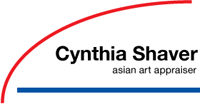Notes From An Appraiser : October 2015
Consults lead to feeling foolish and new standards of reporting
By CYNTHIA SHAVER
cshaver@thearknewspaper.com
This summer I had a steep learning curve, complete with an admonishment from an instructor and a bruised ego.
I have never been good about following rules and little by little, I’d been omitting required pages of regulations from my appraisal reports turning a 50-page report into 30 pages.
I thought this was a very good sign; I was more confident in my skill as an appraiser and in combined statements, I thought I was economizing for clients and myself, and I removed what I considered was “legalize.”
What I learned from a fellow colleague was that my outline and format were wrong.
I needed to follow the itemized checklist for charitable contribution appraisals that is carefully outlined on the IRS website. I followed the IRS format with exact numbering and wording used on the report review checklist, changed my font, and made the report more user-friendly.
The appraisal profession has gone through major structural and regulatory changes in the last 30 years. In 1985, a person simply declared oneself as an appraiser. Later, in 1987, The Appraisal Foundation was formed in Washington D.C., to oversee the different appraisal organizations with a uniform standard, thus the Uniform Standards of Professional Appraisal Practice was formed.
Recently I completed a charitable contribution appraisal for a single Chinese property. Remember: The appraisal is a legal document that will be reviewed by the IRS and I am responsible for errors or omissions to value.
The property had a provenance that added extra value to the auction market where the property is traded, with many mainland Chinese bidding against one another, but not to the property dealers in this country.
I had to explore this phenomenon. This is where the instructor admonishment had come into play: I asked for help and showed my summary report — oh my, Pandora’s box.
Strictly following the uniform standards, under the Narrative Discussion of Market section, were my research methods — contacting which dealers, what scholars, what publications — and the identification of the relevant market to find a comparable. I listed the retail gallery and private dealer market which were actively selling similar properties and the large auction houses, specifically Bonhams, Christie’s and Sotheby’s, where the most exposure is. The highest prices have been achieved when mainland Chinese bidders were in the auction room.
I learned I needed to address the value and quality characteristics of the client property and discuss the similarities and differences between the comparable and the client property. I found three properties that had similar value and quality characteristics as to the subject property. Great.
Then, I needed to learn how to make tables in my Word document. Nice big, many-celled, different-sized tables.
In my 10 years as an appraiser, I had avoided making a table.
It was time; I was embarrassed and being admonished had bruised me deeply. I am proud of my work and of the time, expense and effort I made to become an appraiser.
But I needed to learn how to make a table.
In another paragraph in the report, still under the market discussion section, I addressed the state of the economy and the context of the market. In this particular case, the economy of China is continuing to climb for quality material. I quoted President Xi Jinping who said last October, “… old art is again prestigious.”
I ended this market discussion section with an analysis of market activities including retail, private dealers and auction house. I quoted the auction house sale of the property most similar to the client’s, but added extra for a value characteristic not present, the provenance and a continuing upward market.
This is a small example of what I learned and obsessed about for more than 90 days.
The other 36 pages of the report? I’ll address those in another decade.
Contributing columnist Cynthia Shaver has been an appraiser of Asian art for more than 20 years.

Leave a Reply
Want to join the discussion?Feel free to contribute!